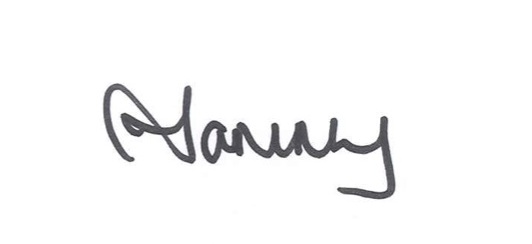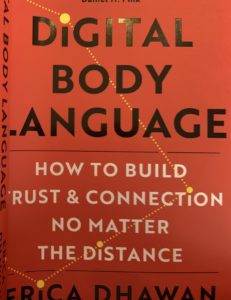Where even is the workplace these days?
We have talked a lot about building trust on this blog, but almost always in the context of face to face interactions . The world has changed over the last year, and the workplace is now not just the offices, retail environments and factories it used to be; people’s homes are now very much part of the workplace landscape. It makes sense then, that we think about how to build trust between colleagues and stakeholders online rather than just face to face.
Erica Dhawan’s fabulous book – Digital Body Language – how to build trust and connection no matter what the distance, is all about this..
“You see, these days, we don’t talk the talk or even walk the talk. We write the talk.”
And the very big problem with writing the talk, is that words can be – no – are – misinterpreted – regularly.
How we misinterpret the written words
As far back as 2013 I have been writing about how words can be misinterpreted online. In this article for HRD I reference Daniel Goleman’s research:
So it was interesting to come across the Daniel Goleman research into the new field of social neuroscience. In essence, this research shows what happens when people talk face to face or on the phone. The connections that their brains make, and how this (usually) allows for some form of responsiveness within the conversation depending on the reaction of the other person. This does not work with emails, texts or online communication. Goleman has found that there is a negativity bias online. That is “..what you thought was a neutral message can be perceived as hostile by the recipient..” and what you thought was positive can be perceived as neutral by the recipient.
Dhawan goes further. She says that approximately 70% of communication between team members is virtual, and that according to the Journal of Personality and Social Psychology, 50% of the time the tone of our emails is misinterpreted.
How trust and connection is being diluted
Added to that, she notes that the conditions that go a long way to fostering trust and connection are being minimised in today’s workplaces:
- Literally more physical distance between teams (if physical proximity is allowed at all);
- Less face to face interactions;
- Limited or no body language to read and interpret;
- A growing pace as things just get faster and faster providing less time to properly consider and reflect on intended intent in communication.
“We come more thoughtless. We grow more accepting of distractions and interruptions, more indifferent to the needs of colleagues and workmates. This digital disconnect leads up to misinterpret, overlook, or ignore signals and cues, creating new waves of organizational dysfunction.”
So what to do?
This isn’t going away any time soon. In fact, every day we hear about organisations who are going fully remote. Or another lockdown occurs and even those organisations that are still working in the same space are sent back to online land.
The advantage we have now is that we’re not all in panic mode. We can look at these behaviours with slightly more time and clarity. We can consider how our own organisations are behaving in the digital space and how that is either contributing to or diluting trust and connection.
- Do an audit of how your team communicates. What tools does do you use? You might be surprised how many you use – and how much double up there is.
- Ask team members how they feel about those tools. Which ones work well? Which ones just cause confusion and miscommunication.
- Agree some rules of engagement around the tools (see below for an article by Erica Dhawan where she gives some great examples).
- Do some work around the team behaviours. For example, one team I have worked with recently has their starting position for all interactions as “assume good intent”.
The Takeaway
There’s a great quote by Maya Angelou “Do the best you can until you know better. When you know better, do better.” We know that there is at least 50% chance that our online communications aren’t as effective as they could be. And we know that some relatively simple things will make a difference.
Put this on your agenda for your next team meeting. Get people talking about it. Ask them to read the article below and give their thoughts. Start the conversation.
More Reading..
Want more still…….
If the above has whetted your appetite, and you’re keen for more.. Here are some ideas:
Does leadership interest you? You can sign up to my FREE seven day “Be a Better Boss Challenge” by clicking here. And you can click here to buy my book.
Are you moving into management, and want some practical, tangible skills that will set you up for success? Check out our six month programme here: JETTG MiM flyer August dates
Want to chat? Click here to get in touch.
Want more to read? You can read any of the 300+ blog posts on this site, by clicking here.
See you soon,



